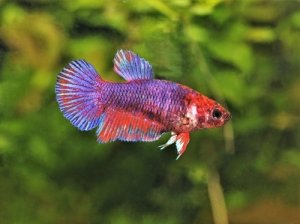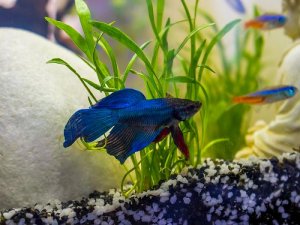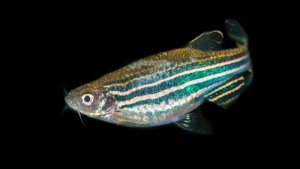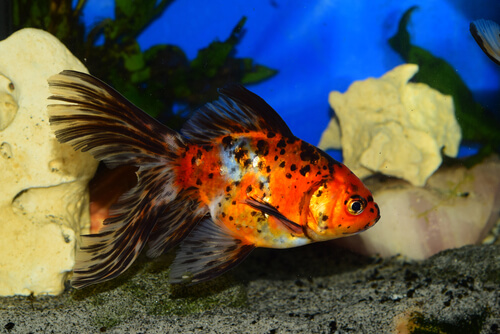
Why Is My Goldfish Losing Color (Turning Black Or White)? Goldfish are some of the most vibrant aquatic creatures, which earned their popularity among aquarium pets thanks to their bright orange shade. Their bright color is seen as their identity, and seeing your goldfish losing color can be a bit disheartening. Besides losing its color, you might even notice your goldfish turning black or white.
If this is your current predicament, you’ve found the right article to help you. Don’t be alarmed, though! A goldfish losing color isn’t an immediate sign of something terrible, but it helps to be proactive. In this article, we’ve detailed everything you need to know about such conditions in goldfish.
What Is The Goldfish’s Natural Appearance?
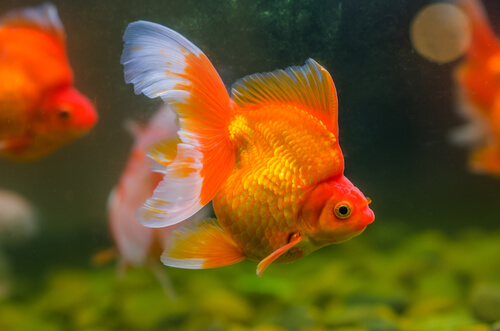
Before diving into the changes observed with regular orange goldfish, there are some interesting things worth knowing about these Carp. As a part of the Cyprinidae family, their appearance in the wild differs from their domesticated counterparts.
Goldfish come in a diverse spectrum of colors, such as bronze, gold, red, white, calico, and black. Along with the classic orange, you should also be aware that your goldfish can change into a reflection of its distant family in the wild. Of course, seeing an unconventional color change in your goldfish can be alarming, but this isn’t something that will occur regularly.
What Causes A Goldfish To Lose Its Color?
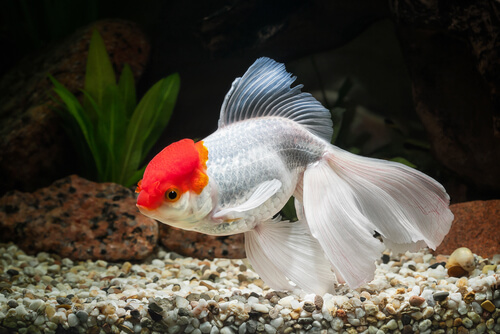
Now that we’ve broken down some crucial details on goldfish colors, it’s time to dig into possible factors that affect their appearance. Whether it’s something damaging, nature, or something you’re reading too deep into, a lot can be drawn from a goldfish losing color.
1. Genetics
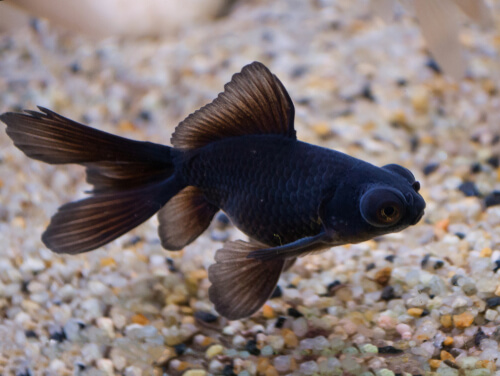
The appearance of a goldfish is easily linked to how it was bred and the life cycle they tend to experience. For some goldfish, turning white is a natural occurrence as they age. However, this behavior has also been observed with certain goldfish in the first year of life. Because of this, it’s not easy to determine what they may look like in the future. Although, not all goldfish bred carefully for their vibrant colors will experience this sort of problem.
With black goldfish, they begin to fade from a rich, deep black color to a lighter black. This is almost a certainty for all black goldfish. Their appearance in later stages of life usually lightens to a grayish tone with gold highlights around their body. Because of their strong genetics, a goldfish turning black or white is something you shouldn’t immediately feel alarmed about when first observed.
2. Illness
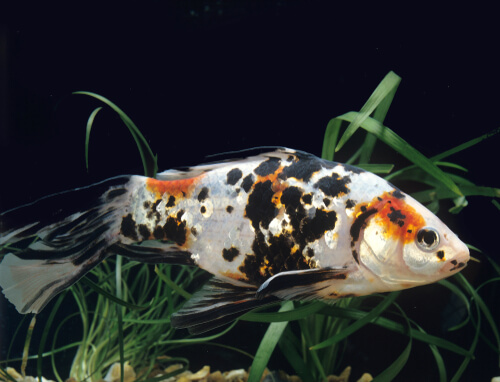
Unfortunately, fish tend to get illnesses from time to time. For a goldfish, that can also mean losing its vivid colors. Infection induced loss of color is very likely depending on how ill your fish is. This means your goldfish can be expected to regain its color after recovery. Still, the first point of action is to treat the illness successfully. Along with losing color, a goldfish not moving is also a strong sign of illness. One particularly problematic illness for them is tuberculosis. A goldfish dealing with it can experience organ failure and risk fatality.
If you suspect an illness, you should test the water in your tank for signs. Look out for dangerous levels of ammonia and nitrates in your observations. These toxins are harmful to goldfish, shortening their lifespan and inducing immense pain.
After confirming the water is the problem, you must quarantine the affected goldfish and begin treatments. Next, you should try consulting with an experienced aquatic veterinarian. This will lead to a diagnosis and recommended steps for its recovery. Be sure to take proactive steps once you suspect an illness, as fish health can be unpredictable.
3. Parasites
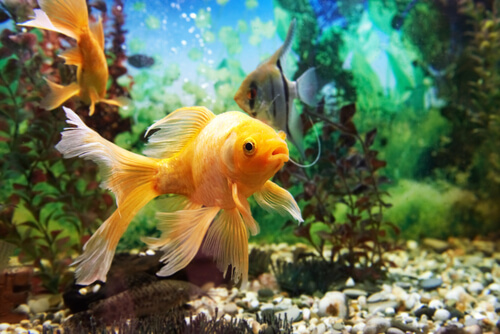
You may notice a color difference when your goldfish is dealing with a parasitic infestation. In particular, flukes is a common type of parasite. These parasites feed on goldfish skin, causing your fish to develop mucus as a combative response. This mucus may give your fish a dull appearance. In addition, the parasite’s effect is also strong enough to result in your goldfish not moving or displaying strong signs of lethargy. Some other symptoms of a parasite are clamped fins and lesions.
The best response to parasites on your goldfish is to quarantine them. Keep it away from the main tank and other fish for at least four weeks. Be sure to use the correct treatments during this process. Once your fish has healed, the color should return to normal.
4. Lighting
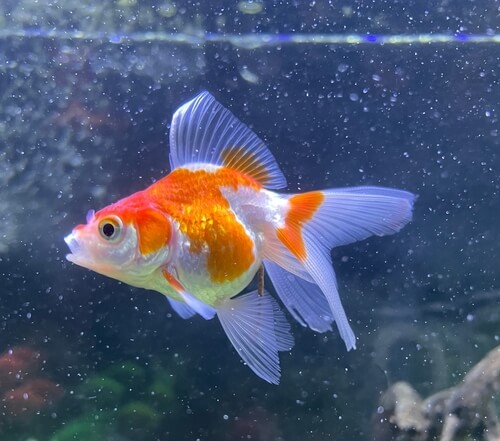
As weird as it may seem, the lighting might be the answer to your goldfish turning black or white. When your goldfish is kept under dim lighting conditions, it can begin to lose its brighter colors. Goldfish skin has a pigment that is reactive to UV light. If there’s extreme sunlight or a lack of sun, your goldfish can begin to turn white.
The most important thing with goldfish and lighting is your ability to be consistent. A goldfish needs to be under a light that complements its needs. Therefore, ensure your tank is always well-lit and kept out of direct sunlight. Alternatively, using a lamp is an excellent choice to encourage the vibrant orange on its body.
To put into perspective the importance of lighting for goldfish, you can observe that goldfish kept in ponds have brighter colors compared to their aquarium-kept counterparts.
5. Diet
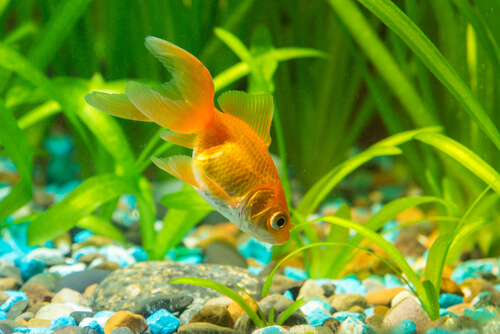
Goldfish tend to eat like they’ve never seen a meal before. These little guys have huge appetites but still require a balanced diet. Therefore, investing in the proper meals is good for keeping them healthy. A goldfish losing color can be directly linked to whether or not it is on a good diet. When purchasing fish food, opt for high-quality foods from the pet store. Quality goldfish food may cost a little more, but it will benefit your fish much more. Many high-end products are specifically designed to improve vibrancy in goldfish colors. Be sure to look out for those with these specifications.
Goldfish tend to eat a mixture of plants and animals in the wild, so you can consider using this information as a baseline for what to include in their diet. Also, focus on consistency with feeding, ensuring that they eat 2 or 3 times daily. Too frequent feeds can lead to overfeeding, so be wary of this. In return, overfeeding can develop other complications, like your goldfish not moving.
Goldfish owners have popularly noted that Spirulina algae and Bentonite clay have done an excellent job with their colors, so you should look into those options too. Nevertheless, whichever method you choose to improve your aquatic friend’s diet, you shouldn’t expect the color to return right away. Often it is a gradual process.
6. Tank Environment
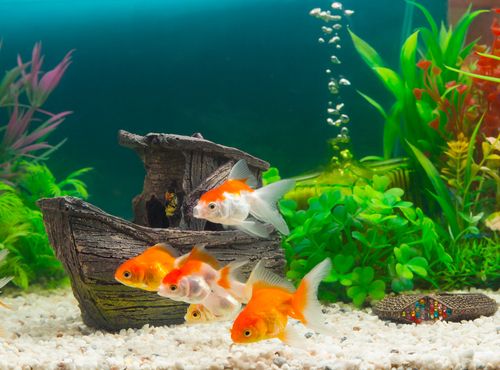
As much as you feel like your goldfish is adaptable, there are still some limits you shouldn’t push with them. Sudden changes in their habitat can trigger a goldfish, primarily due to their sensitivity. You’ll have to watch for parameters like your tank temperature, pH balance, water hardness, and other factors.
Having water that sits at 6.5 – 7.5 is your ideal level for the pH balance. This pH balance is vital because it helps avoid lethargy, poor health, and loss of appetite. Your goldfish turning black or white can also be in response to more minor changes in your tank, even events that don’t directly relate to water conditions. For example, new decorations or revamping your tank’s design can trigger new behaviors.
One particular goldfish response to change is stress. A stressed goldfish is one that feels like things aren’t quite right in its environment. To help it out, consider removing any recent additions to your tank or restoring the environment to one your fish is familiar with.
If your goldfish is beginning to turn white after adding a new tank mate, there isn’t much you can do here. Don’t be too worried, though. They tend to eventually adjust to the change, brightening up after some time.
7. Poor Oxygen Levels In Tank Water
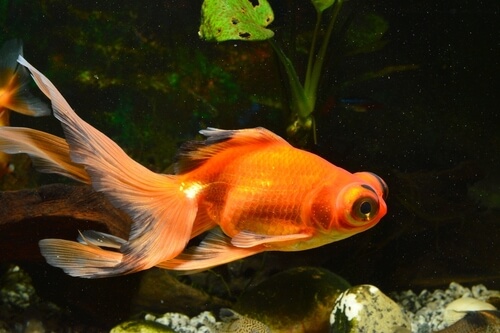
Poor oxygen levels in a goldfish tank can be spotted if you notice them going translucent white. If you spot this, it’s time to perform a water change of about 60% of the water volume in your tank. This will help with improving water conditions.
To avoid this problem, you’ll need to keep your tank oxygen levels at around 8.3 PPM (parts per million). Although goldfish can handle oxygen levels that are lower than that, it is best to avoid this as it does make them uncomfortable.
Conclusion
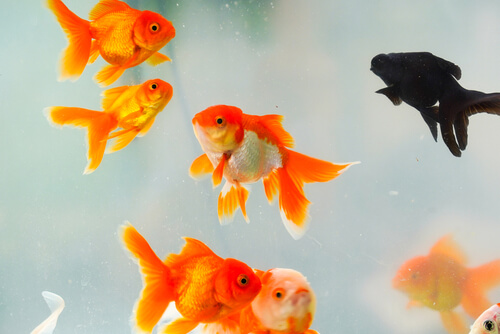
There you have it! Goldfish have quirky biology, but they are also quite understandable once you have their challenges in your memory. Keep this guide as a reference in case you ever find a goldfish turning black or white!


